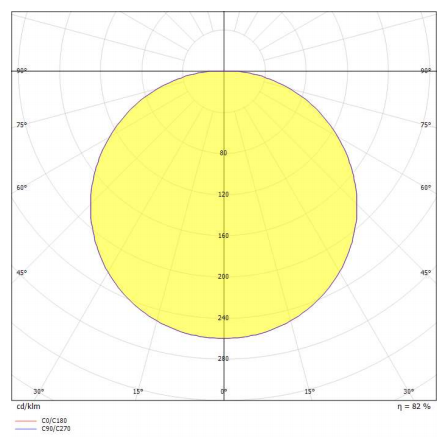Answer the following questions, since the lamp whose light distribution curve is given has a power of 23.4 W and an efficiency factor of 112 lm/W. a) How many lumens is the luminous flux of the lamp? b) If the lamp were a smooth sphere, that is, if the luminous intensity was constant in all directions, how much cd would this value be? c) If the lamp were a regular sphere, how many lx would the luminosity level it would create from a height of 2 m just below it?
Answer the following questions, since the lamp whose light distribution curve is given has a power of 23.4 W and an efficiency factor of 112 lm/W.
a) How many lumens is the luminous flux of the lamp?
b) If the lamp were a smooth sphere, that is, if the luminous intensity was constant in all directions, how much cd would this value be?
c) If the lamp were a regular sphere, how many lx would the luminosity level it would create from a height of 2 m just below it?
d) If the lamp were a hemisphere, how many lx would the illuminance it create from 2 m above it be? (r = 10cm)
e) Note that the values in the light distribution curve of the lamp shown in the figure are given as cd/klm (cd / 1000 lm). According to this, how many lx will be the (real) illuminance level that will be created directly under the lamp from 2 m high?
f) How many lx will be the illuminance of the lamp on a plane illuminated by the same height at an angle of 30°?
(I need help solving this question, I would appreciate it if you can help quickly.)

Step by step
Solved in 5 steps with 4 images







